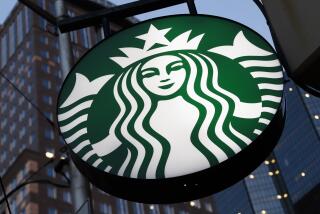Howard’s lament
ON THE WAY to Vegas on Interstate 15, in the dusty town of Baker, you stumble across a spotless Starbucks with a convenient drive-through window. It’s a pleasant surprise for weary highway travelers, but that one store represents Howard Schultz’s consuming worry.
Schultz, the visionary behind Starbucks, is beginning to feel that his $8-billion chain of 13,000 coffee shops may be the victim of its own success. In a Valentine’s Day memo to company executives that found its way to a website called Starbucksgossip.com, Schultz angsted about the “commoditization of the Starbucks experience.” Schultz is worried that the romance, or at least the aroma, is gone, as efficiency dictates the adoption of automatic espresso machines and flavor-locked packaging. Some stores hardly grind beans anymore.
Shultz has built one of the most admired American brands of the last quarter of a century, and has altered everyday habits as few other entrepreneurs have. His notion that people would eagerly pay several dollars for a cup of coffee and relish spending time in a comfortable “third place,” as he likes to call it -- neither home nor work -- also became one of the prime exhibits of the affluence of the last two decades.
There is something timeless about the coffee czar’s paradoxical concern that, as his chain becomes ever more successful, it also becomes more vulnerable. Starbucks’ growth only levels the playing field for fast-food and mom-and-pop competitors who can serve up all the aroma and atmosphere you want. How can that be possible?
That’s part of the paranoia-inducing aspect of brand-driven consumer capitalism. Other retailers, such as Home Depot, Wal-Mart and Gap, have recently suffered as a result of straying away from their initial “core,” as Schultz puts it.
Starbucks serves great coffee, but it also owed much of its initial success to the brand’s sheer prestige. Spending almost $5 on a latte was a form of affordable conspicuous consumption, but now that the brand and practice are so ubiquitous, it’s hard to feel too self-important just because you know that a “venti” is really a large. Starbucks has tried to address the issue by offering even pricier coffee, but the commoditization of both the corporate brand and good-quality coffee may be irreversible -- and a net positive for the world.
Even if some of the romance is lost.
More to Read
Eat your way across L.A.
Get our weekly Tasting Notes newsletter for reviews, news and more.
You may occasionally receive promotional content from the Los Angeles Times.










